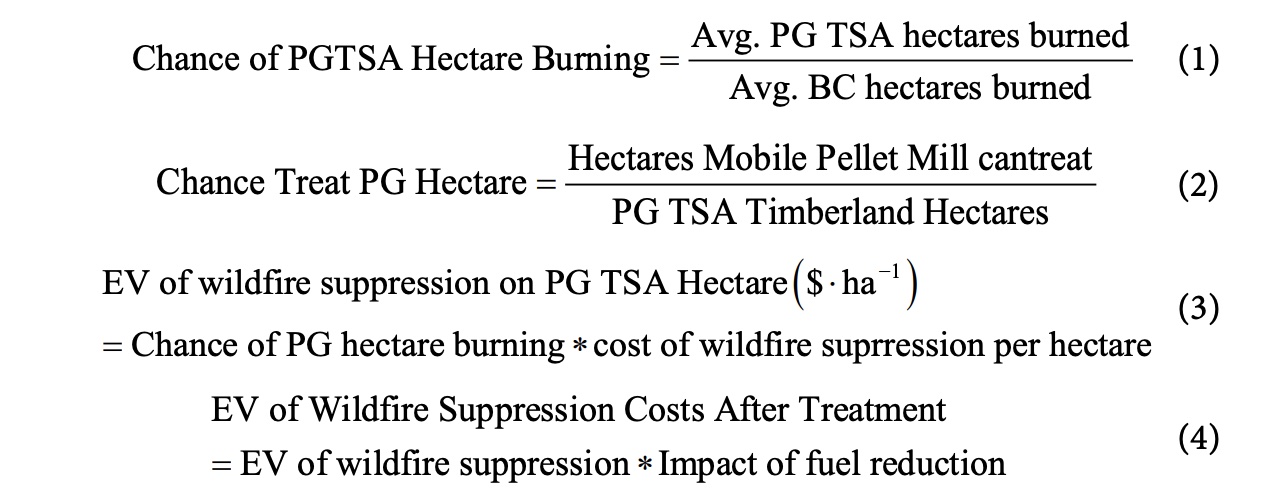Ancillary Impacts of Harvest Residue Pelletization
Journal of Sustainable Bioenergy Systems,
Ryan Jacobson, Shahab Sokhansanj, Dominik Roeser, Jason Hansen, Bhushan Gopaluni, Xiaotao Bi
[PDF]
Abstract
This paper analyzes the implications on employment, taxation, and wildfire fuel reduction costs when using mobile pellet mills to remove biomass and reduce wildfire fuels. Wildfire suppression costs in British Columbia have exceeded the set budget in 9 of the last 10 years and the province has only reduced the fuel load on a fraction of the high-risk hectares. Using a novel high-moisture mobile pellet mill allows the production of 89,000 tonnes of wood pellets each year for a price of $293 tonne−1 . Each tonne produced also provides $546 tonne−1 in additional benefits from employment, taxation, and reductions in the cost to perform fuel treatments. The presented research found that 11 employees are needed to operate a mobile pellet mill, with total employment of 242 for 22 systems across BC. The assessed system can also avoid $5.5 million in employment insurance payments. The 22 systems also provide $323,000 in taxable profits and $524,000 from income taxes from employees. Fuel treatment with the researched systems costs $1112 ha−1 . A cost-benefit analysis shows that the system provides $2.97 in benefits for every dollar invested.
Read or Download: PDF
